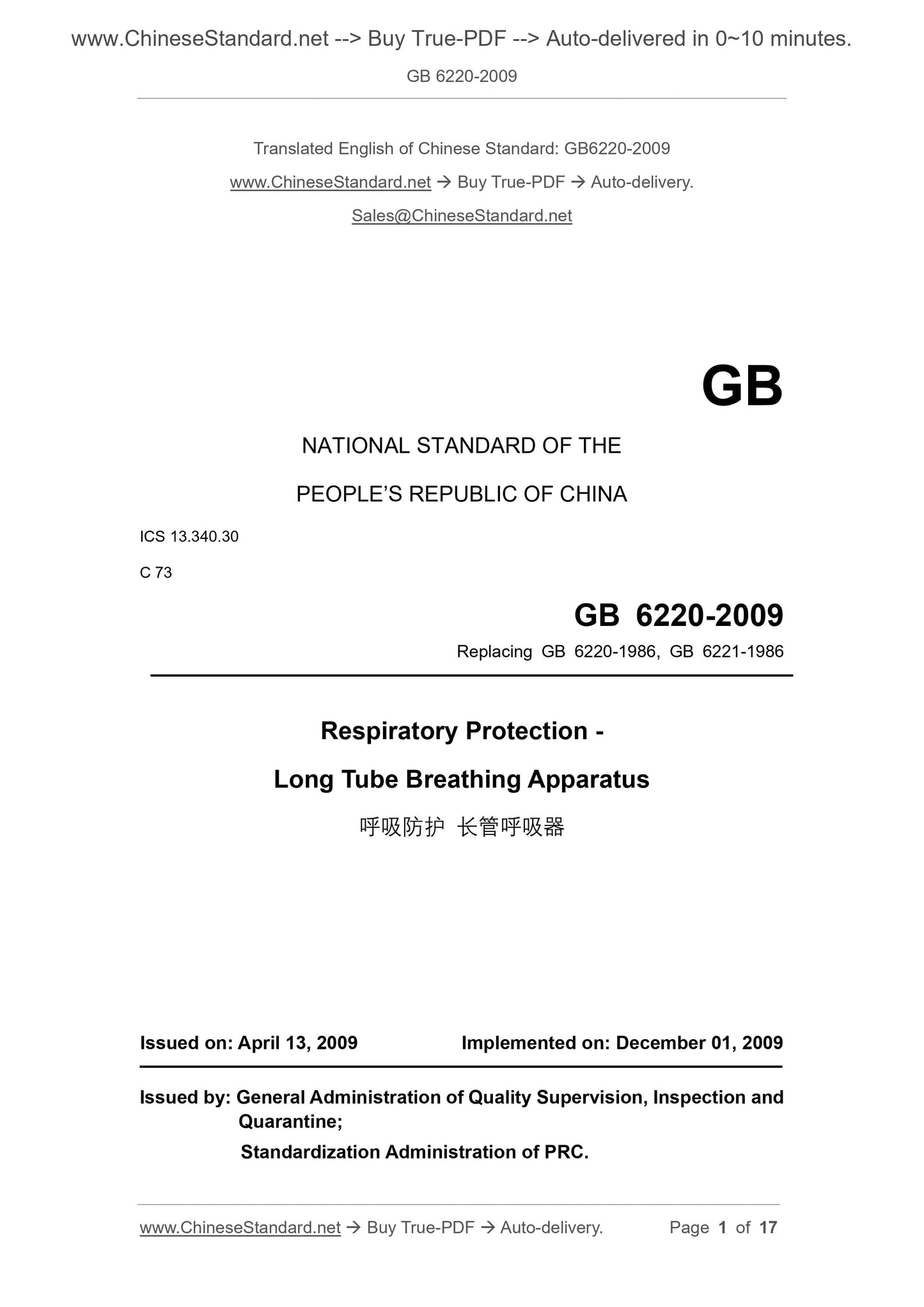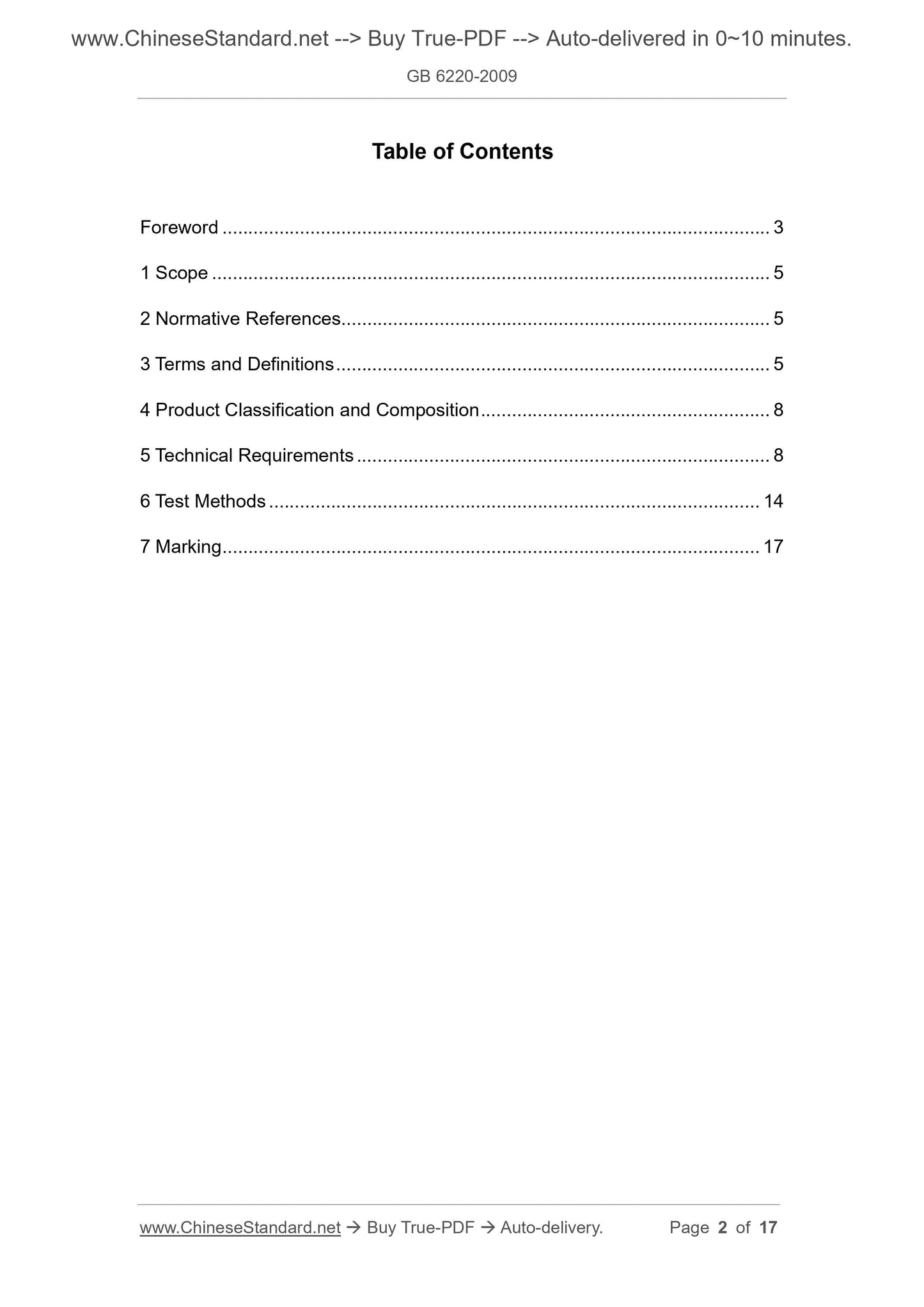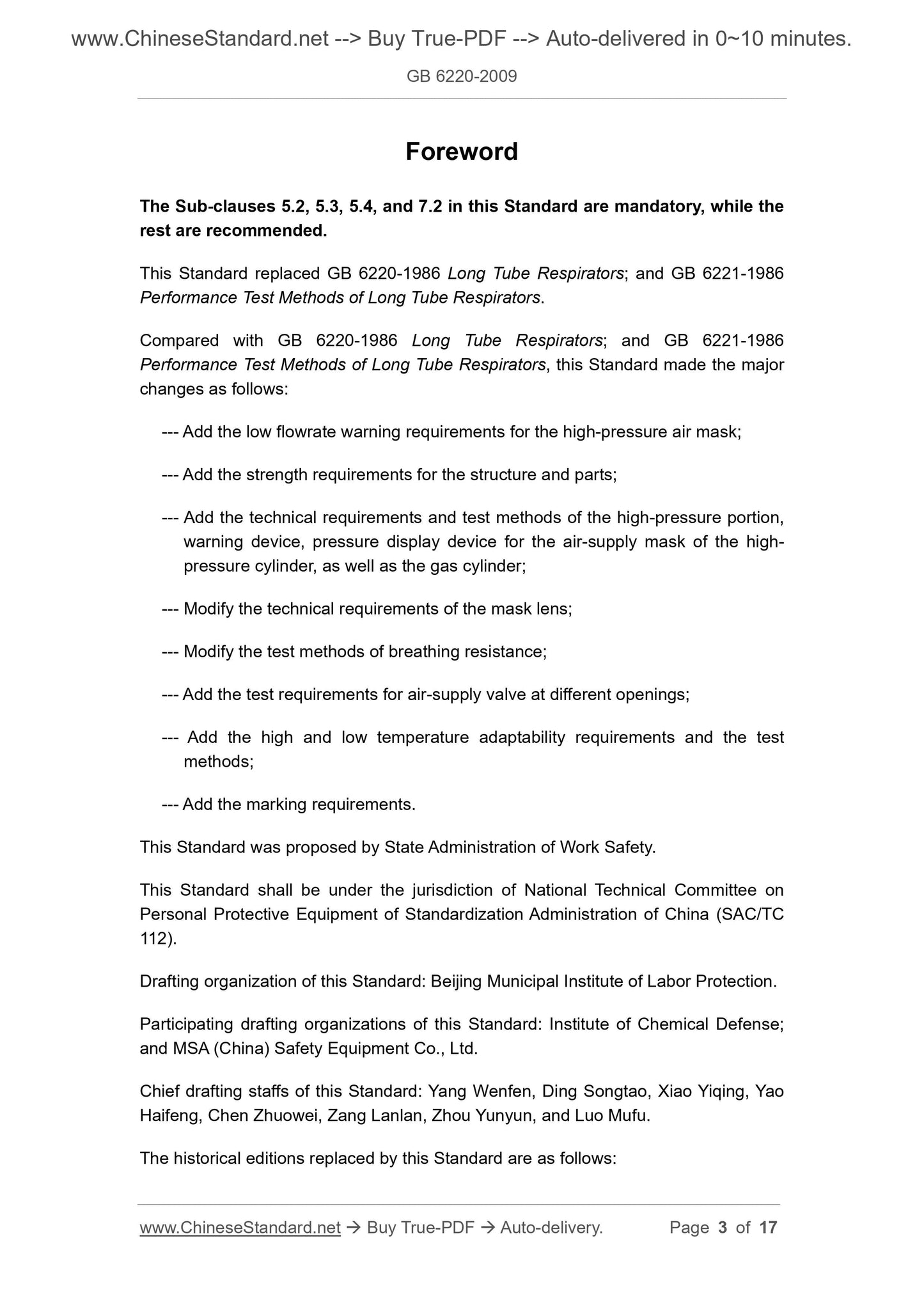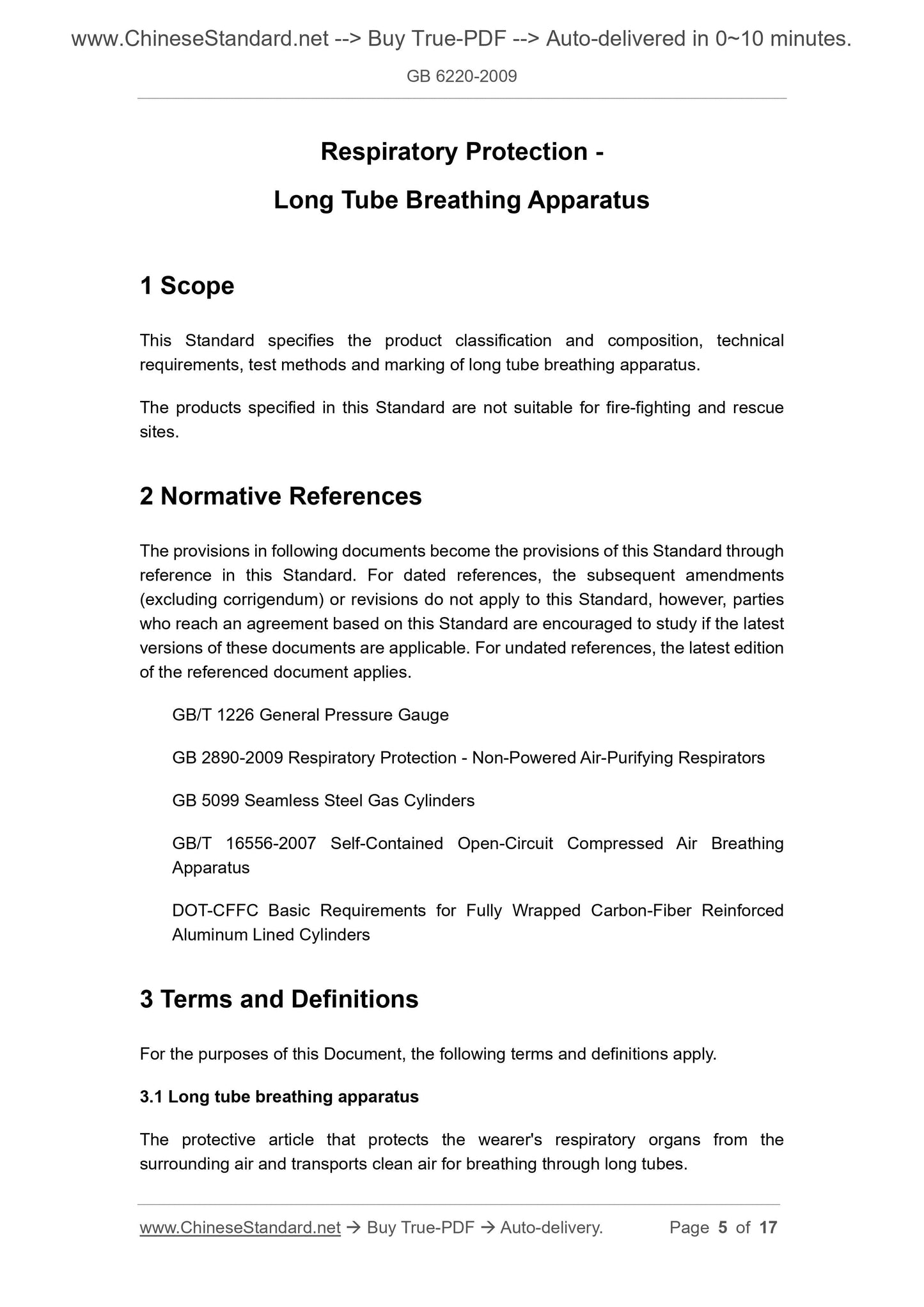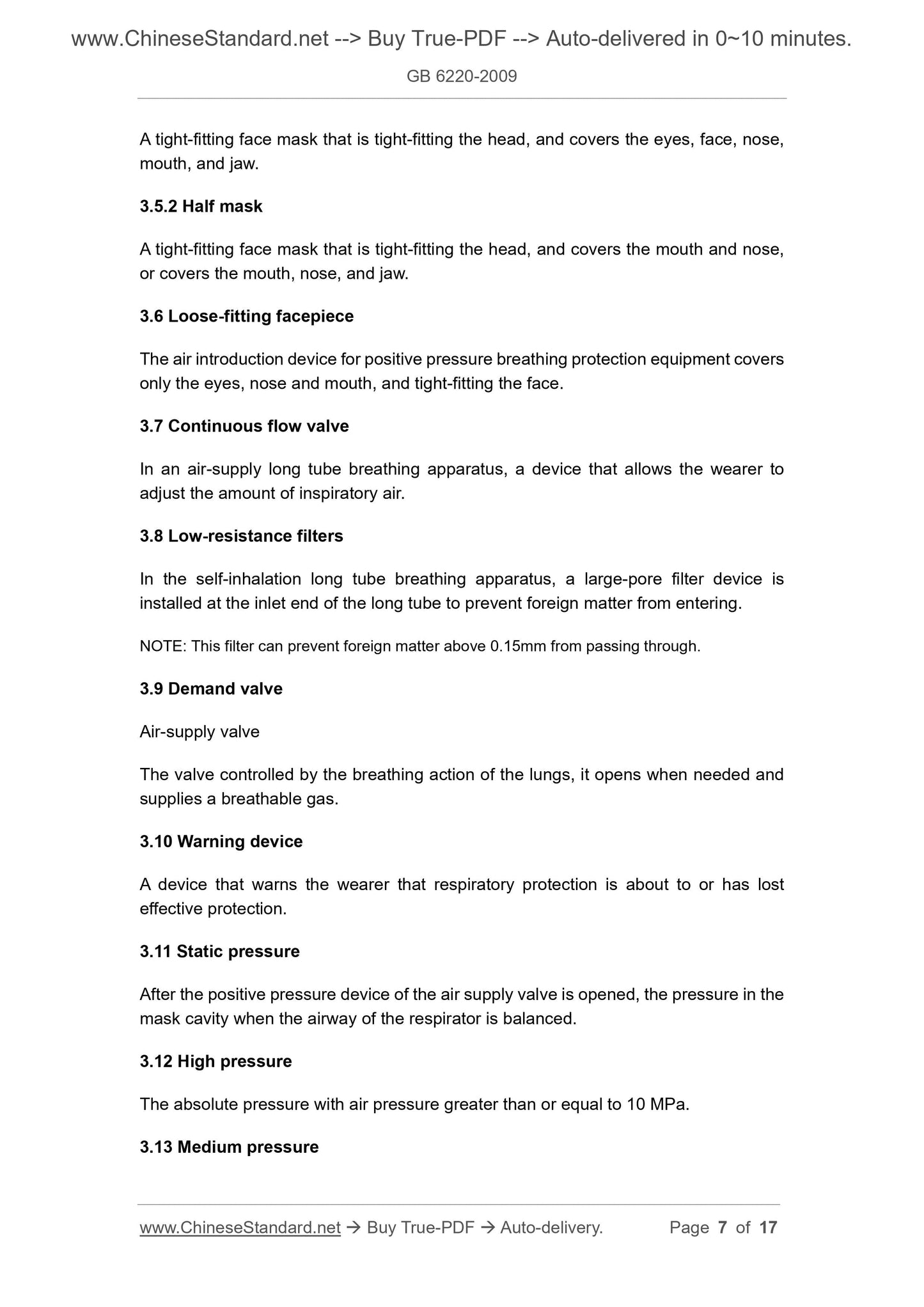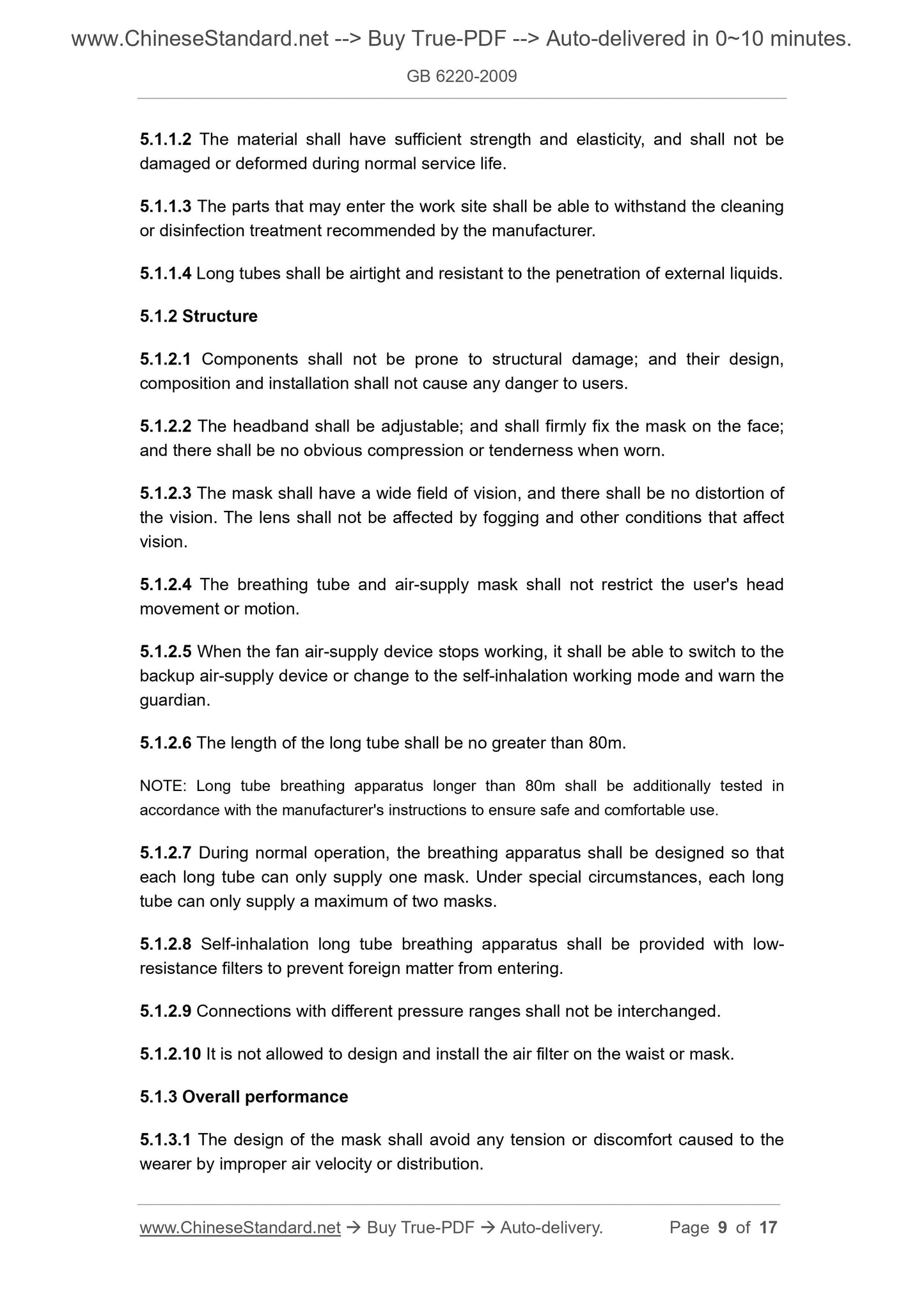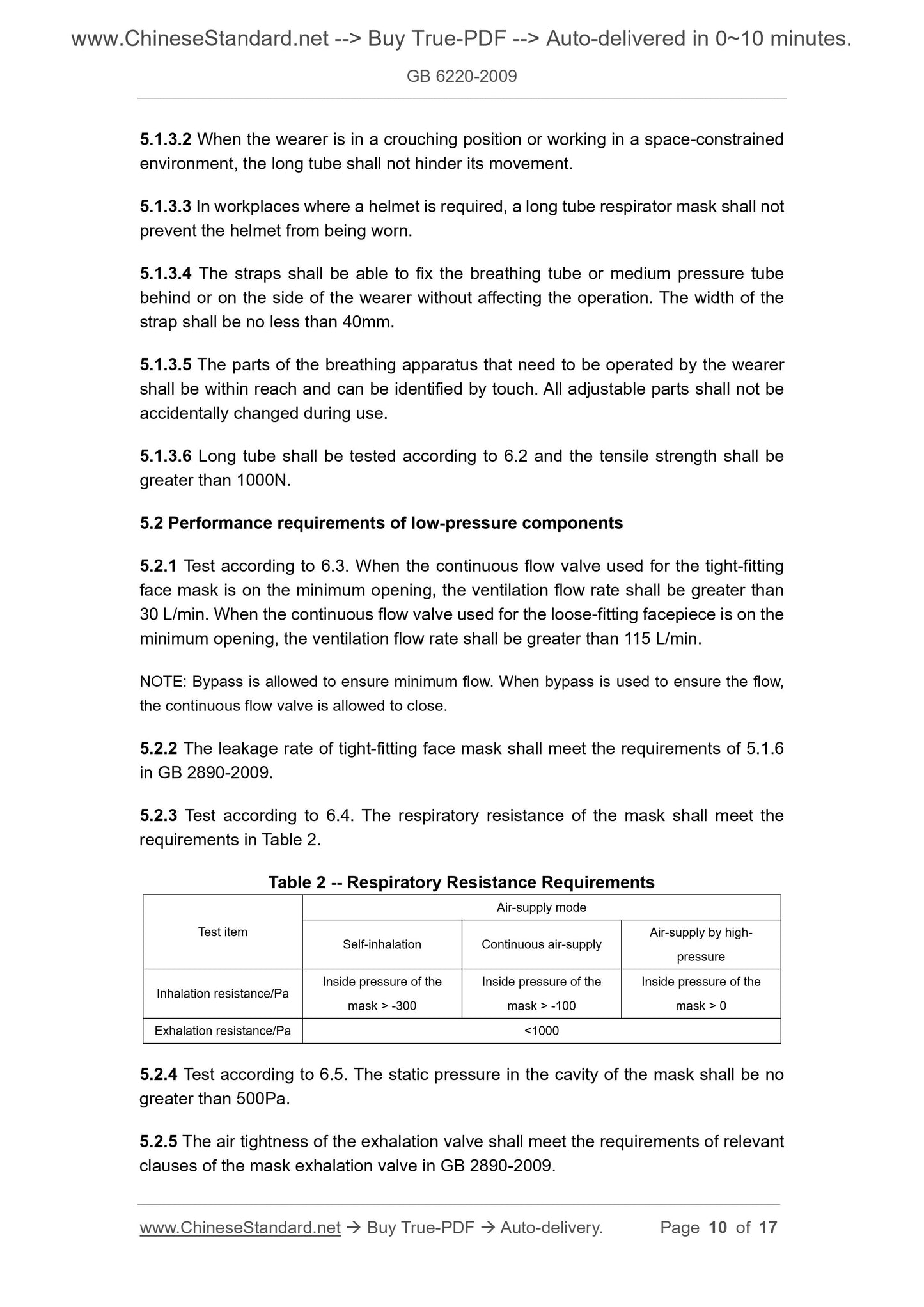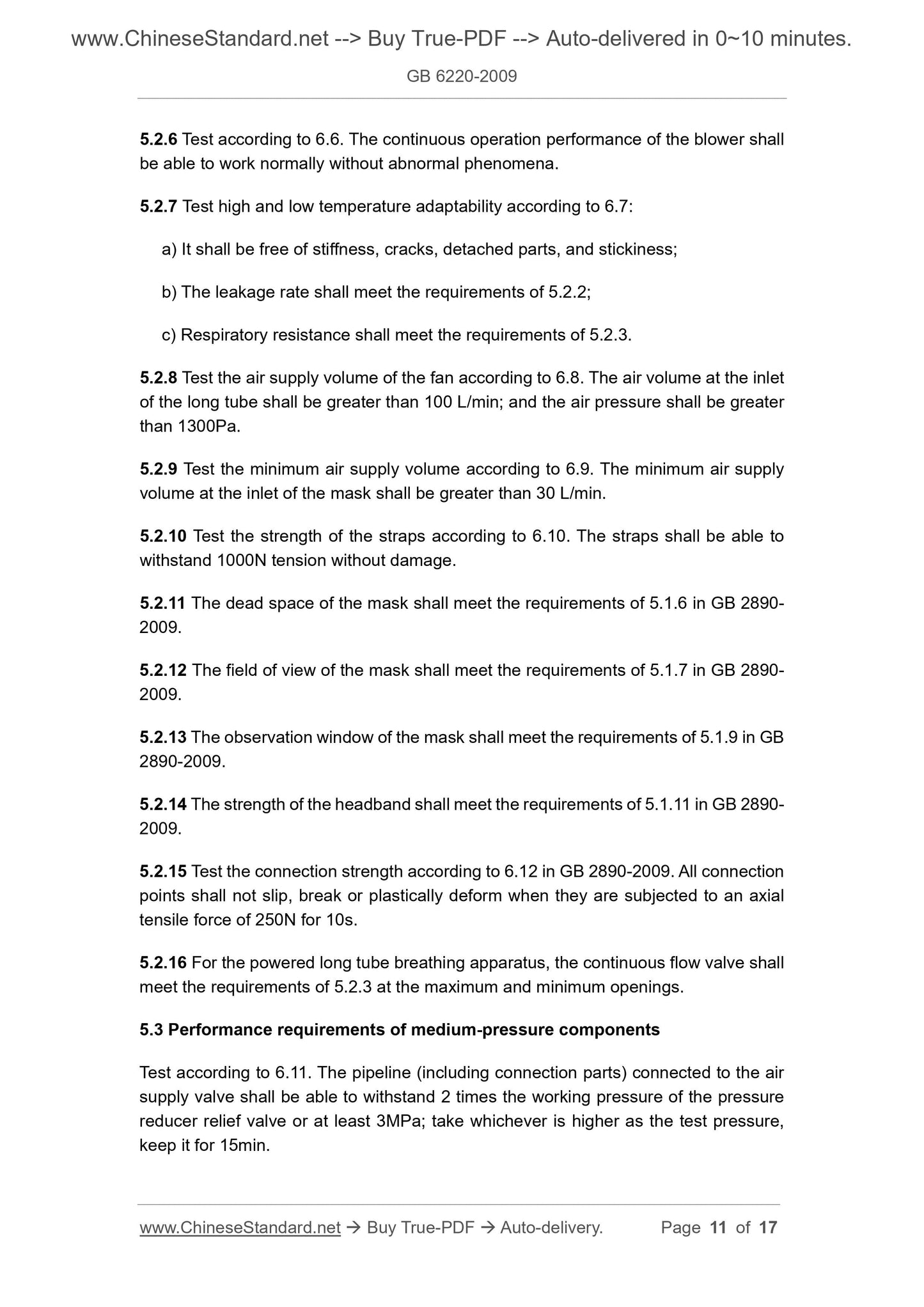1
/
of
11
www.ChineseStandard.us -- Field Test Asia Pte. Ltd.
GB 6220-2009 English PDF
GB 6220-2009 English PDF
Regular price
$160.00
Regular price
Sale price
$160.00
Unit price
/
per
Shipping calculated at checkout.
Couldn't load pickup availability
GB 6220-2009: Respiratory Protection - Long Tube Breathing Apparatus
Delivery: 9 seconds. Download (and Email) true-PDF + Invoice.Get Quotation: Click GB 6220-2009 (Self-service in 1-minute)
Newer / historical versions: GB 6220-2009
Preview True-PDF
Scope
This Standard specifies the product classification and composition, technicalrequirements, test methods and marking of long tube breathing apparatus.
The products specified in this Standard are not suitable for fire-fighting and rescue
sites.
Basic Data
| Standard ID | GB 6220-2009 (GB6220-2009) |
| Description (Translated English) | Respiratory Protection - Long Tube Breathing Apparatus |
| Sector / Industry | National Standard |
| Classification of Chinese Standard | C73 |
| Classification of International Standard | 13.340.30 |
| Word Count Estimation | 10,199 |
| Date of Issue | 2009-04-13 |
| Date of Implementation | 2009-12-01 |
| Older Standard (superseded by this standard) | GB 6220-1986; GB 6221-1986 |
| Regulation (derived from) | Announcement of Newly Approved National Standards No. 4, 2009 (No. 144 overall) |
| Issuing agency(ies) | General Administration of Quality Supervision, Inspection and Quarantine of the People's Republic of China, Standardization Administration of the People's Republic of China |
| Summary | This Chinese standard specifies the long tube respirator product classification and composition, technical requirements, test methods and labeling. Products specified in this standard does not apply to fire, rescue sites. |
Share
